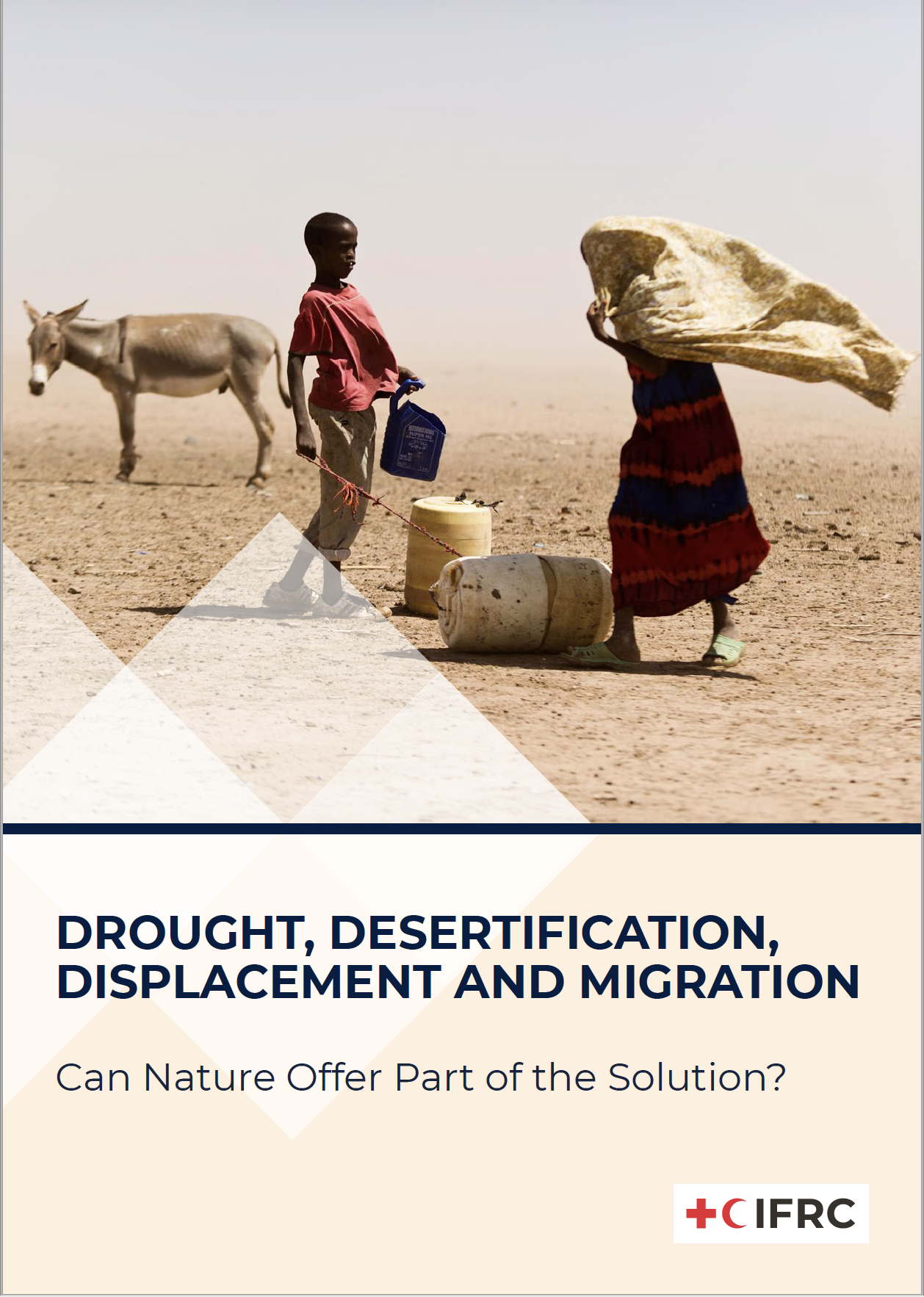Drought, desertification, displacement and migration: can nature offer part of the solution? IFRC, 2022

This paper is the result of an event that took place on the 10th of November 2021 as part of the Development and Climate Days at UNFCCC COP26. This paper will summarize the key points of discussion from the four expert panelists, representing environmental and humanitarian perspectives, from both practice and policy, in combating drought and desertification and associated migration and displacement.
This paper begins by talking about the effects of climate change and human activities on drought and desertification (Chapter 2.1). We then talk about migration and displacement and its impacts on affected communities (Chapter 2.2) and how drought and desertification are one of the drivers (Chapter 2.3). We then show how nature is a valuable tool in combating drought and desertification, including building on the example of work carried out by Kenya Red Cross (Chapter 3). Lastly, we discuss the necessary steps, best practices and lessons learned for implementing nature-based solutions as part of disaster risk management to address drought, desertification and related migration and displacement (Chapter 4).
